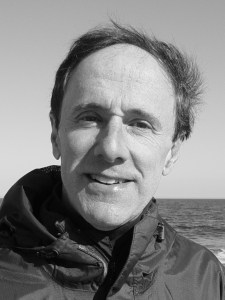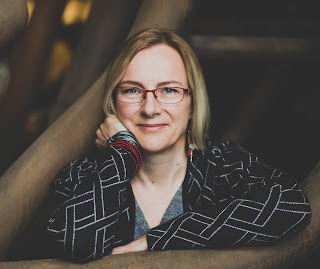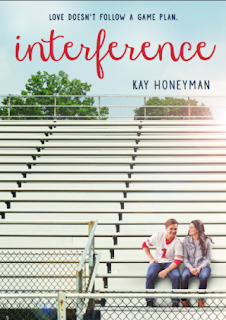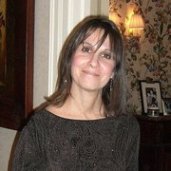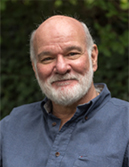Q:
How did you come up with your character Marianne and with the idea to focus your new novel around someone with bipolar disorder?
A:
That’s a great question because my other novels have come from dark what if
moments related to my life. Not this one. I’d already abandoned a novel about a
single dad with a teenage daughter who has undiagnosed bipolar disorder, when I
was visiting my mother in rural England.
A
random scene, which had nothing to do with anything I was working on, started
playing in my head. It was set in my childhood church, a place that celebrated
its 1,000th birthday—yes, three zeroes—when I was a teenager.
An
elegant American woman was sitting in the back pew wearing sunglasses while the
church ladies did the flowers. They became increasingly concerned about this
stranger, until one of them ran off to find the vicar. (He was whacking weeds
in the rectory garden wearing ripped jeans and a U2 T-shirt.)
When
he crouched down to talk with the woman, he recognized her as his childhood
best friend, and said, “Marianne, what’s brought you back after all this time?”
She replied, “I’ve come home to die.” Which she hadn’t, and I knew that, but I
knew nothing else.
Fast
forward a couple of years, and I was agonizing over what to write next. I had
to take an incredibly long car journey and as I drove, that scene starting replaying.
This time it didn’t stop.
But
it was a hard story to find, and Marianne is the most challenging character
I’ve written to date. At one point, I was ready to quit. I’m a research-heavy
novelist, and my initial research into manic-depression was overwhelming.
But
then I started interviewing inspiring women who live with the disease, and they
helped me find Marianne’s voice. I love Marianne; I hope readers will too.
Q:
In the book, you switch perspectives among four main characters. Did you plan
to do that from the beginning, or did that change as you wrote?
A:
I’m a fan of multiple viewpoints as a reader and as a writer. The first three
drafts were written with three viewpoints: Marianne; Gabriel, my U2 fan and English
vicar; and Marianne’s almost-daughter, Jade.
Then
my beta reader said, “We need to hear from Marianne’s husband, Darius.” So I
added one chapter. When the manuscript arrived at Lake Union, my wonderful
editorial team decided readers needed more Darius. I had loads of fun weaving
in his voice, and it gave the manuscript a different feel. This is why I love
to be edited.
Q:
How was the book's title chosen, and what does it signify for you?
A:
The working title was Missing in Madness, but my publisher felt that suggested
a psychological thriller. Finding a new title that reflected the story was
tough because nothing I came up with worked as women’s fiction.
We
had already batted around a number of titles that included “echo” when the Lake
Union marketing director threw out Echoes of Family, and my editor and I both
loved it.
My
titles have to fold into the story and have direct significance, and
the
word “echoes” works on many levels. Marianne runs a recording studio with
Darius and Jade—her family—and all three of them prefer to record in older
spaces with natural reverb, an echo.
Plus,
everything for Marianne goes back to a fatal car wreck she was involved in at 16.
The other survivor was Gabriel, and he’s the only person who knows all her dark
secrets—including the ones her memory erased. The title actually refers to
their story, but that’s a plot spoiler. Sorry!
On
a personal level, I think the title suggests that you can always hear the
echoes of your past.
Q:
The book goes back and forth between scenes in England and the U.S., both
places where you have lived. Did you prefer one setting to the other as you
were writing?
A:
That’s tough to answer because both places have inspired my writing for 20
years. It was a joy, however, to reimagine my childhood village as Newton
Rushford.
My
86-year-old mother, who still lives there, named the village, which I love
because Echoes of Family is very much my tribute to a corner of England where
part of my heart still lives. I guess it’s my echo.
Q:
What are you working on now?
A:
I’m working on novel five (technically six since I have an unpublished manuscript).
My current working title—but that will change—is The Slightly Insane Mother,
which is inspired by The Catcher in the Rye and a line about all mothers being
slightly insane. The story is based on the premise: can you be a good mother if
you’ve abandoned your baby?
My
heroine has something called harm OCD, which is a particularly nasty mutation
of obsessive-compulsive disorder. It often hits new moms in the postpartum
phase and traps their minds in a never-ending horror movie of physically harming
their babies.
OCD
is a twisted anxiety disorder that latches on to the things you care about
most, often filling you with fear for the safety of your loved ones.
Since
my grown son has battled OCD for most of his life, I’m painfully familiar with its
impact on families, but harm OCD is, to quote the mother who runs a wonderful online
group called Mamas with Anxiety, OCD, and Panic Disorder, “the dirty underwear
of the OCD world.” Most mothers battle it in secrecy, isolation, and shame.
When
her daughter was seven months old, Katelyn MacDonald had intrusive images of stabbing
her baby. Believing that she was a psycho killer, she ran away. Ten years
later, she’s done the work to get well and has reinvented herself as Katie
Mack, a female metal artist.
One
day, preparing for an art show, she crosses paths with her daughter and realizes
10-year-old Maisie MacDonald also has OCD. Katie must then decide how to re-insert
herself into her daughter’s life for the same reason she left: to protect her
from monsters.
Q:
Anything else we should know?
A:
To receive updates on new releases and giveaways, please sign up for my
newsletter at http://www.barbaraclaypolewhite.com. My social media links and
email are also on my website, and I’m always on Facebook. Thank you for hosting
me, Deborah. See y’all in cyberspace!
--Interview with Deborah Kalb













